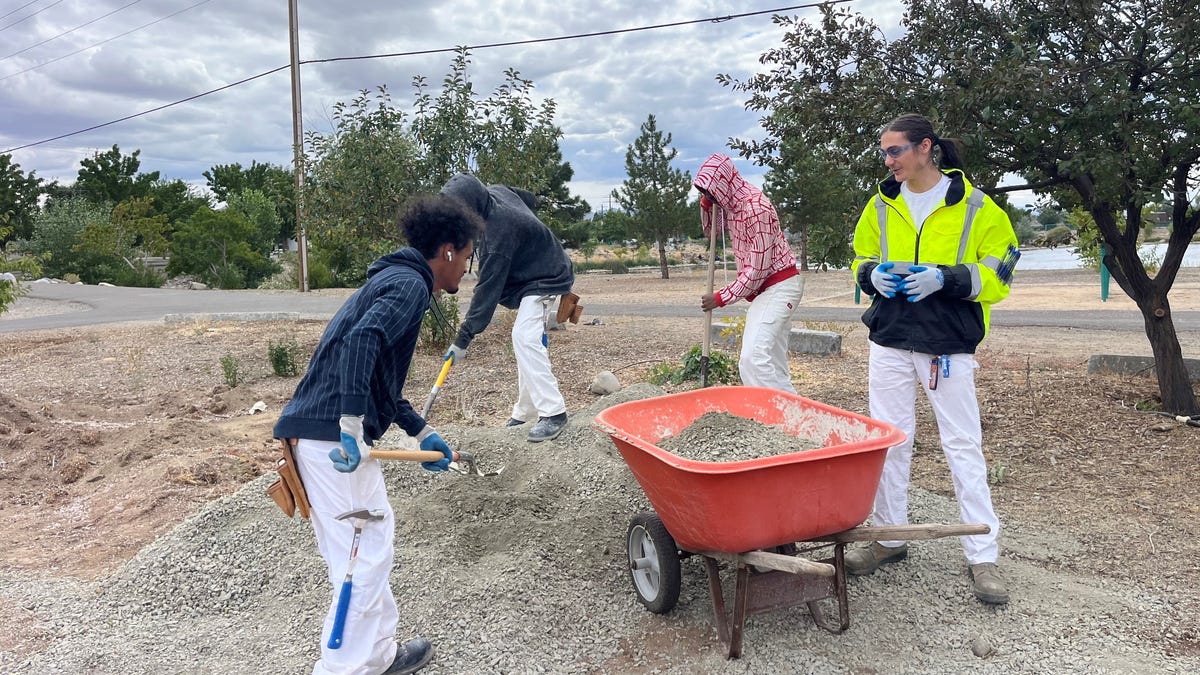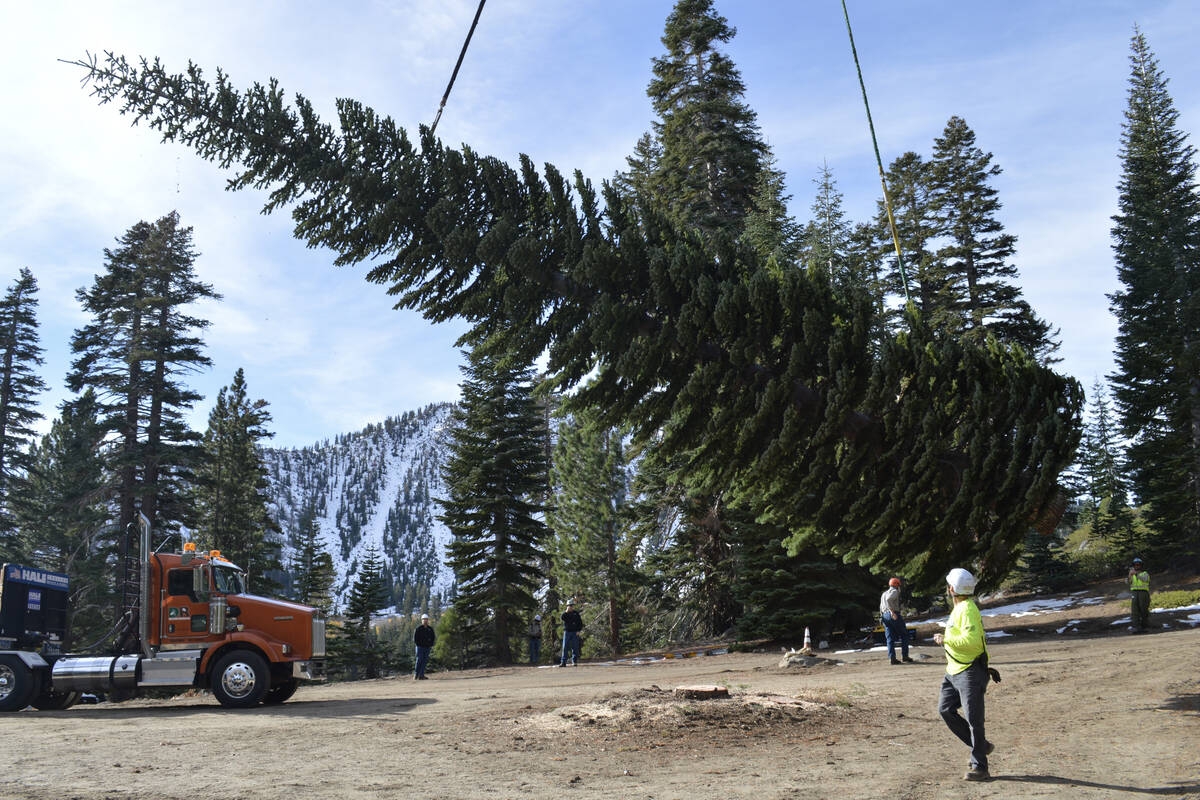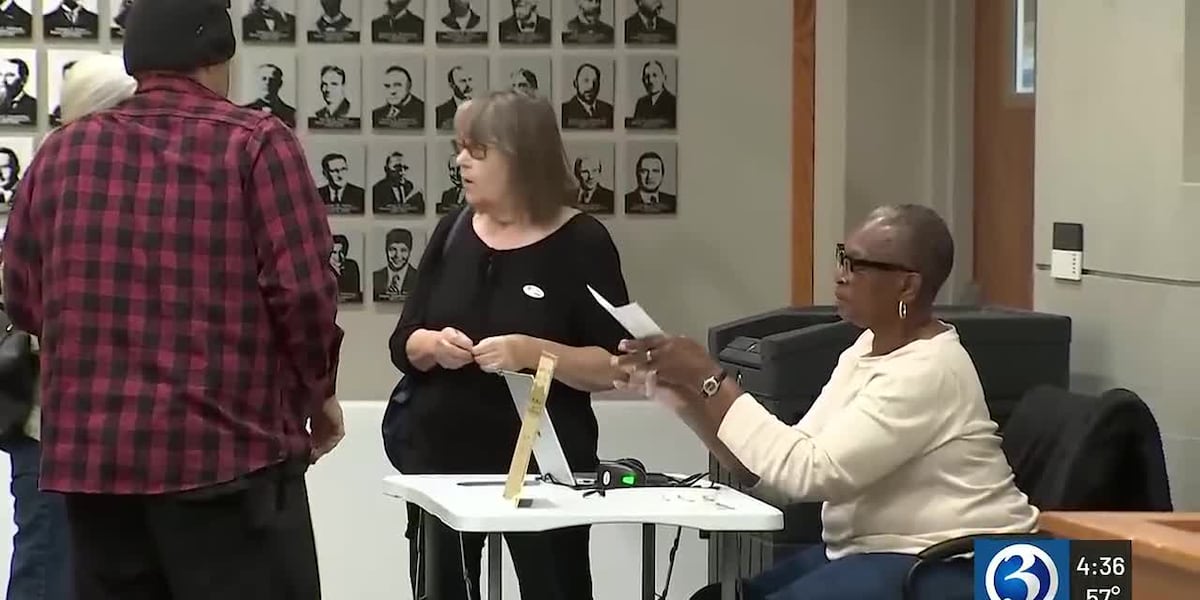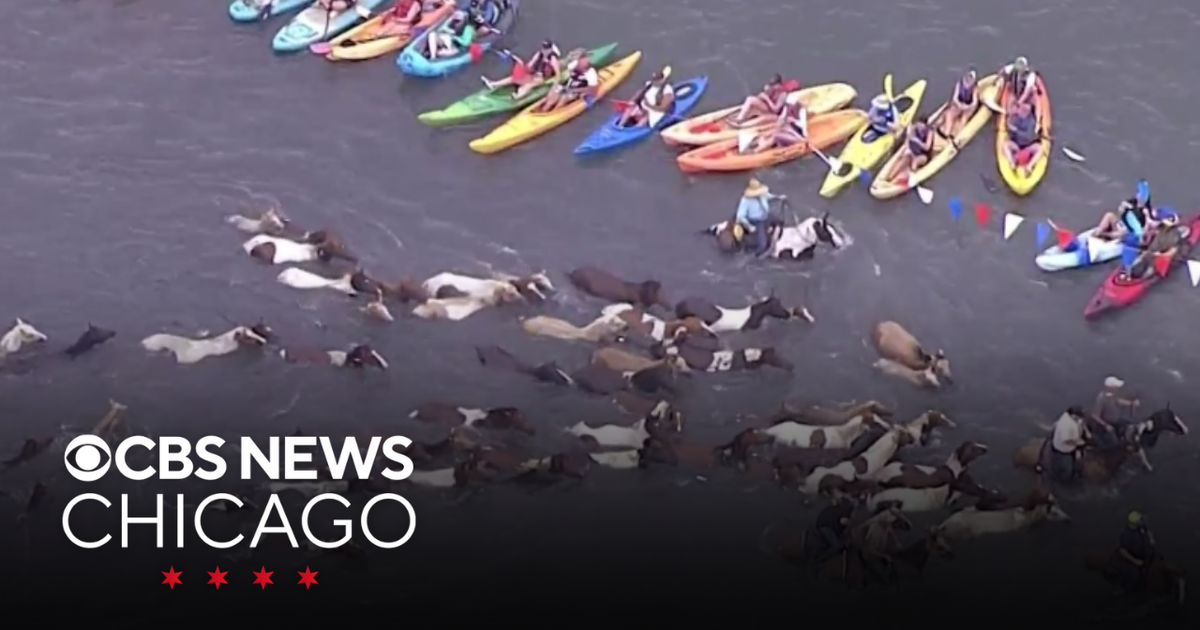Nevada
400 students, 170 staff at Sierra Nevada Job Corps in limbo after Trump cuts announced

Sierra Nevada Job Corps in Reno announced to its staff and students Thursday afternoon that it’s shutting down after President Donald Trump ordered its funding be cut to zero.
It’s part of a 60-year-old nationwide program funded by the federal government to train low-income youth ages 16 to 24 for jobs in construction, auto mechanics, nursing, welding, culinary arts, security and more.
“Usually we have about 400 kids on campus at a time,” said Leslie Mix, who handles business relations at Sierra Nevada Job Corps. “It’s a constant flow of young people. We’ve got over 300 kids in the queue waiting to come here.”
Located in Stead with a staff of about 170, the campus includes five dorms, a certified high school, cafeteria and medical services.
According to a news release, the Labor Department will arrange transportation and cover costs to transfer students back to their homes of record by June 30.
“Most of the kids live here so all their stuff is here,” Mix said. “It’ll have to be packed up and transportation arranged. Some can go by air; some will have to go by bus. It’s a cluster.”
Job Corps employees will likely be unemployed, at least in the short term. Staff are not federal employees but paid by independent contractors.
“The Department will provide staff with targeted information and eligibility determination for employment services, access to apprenticeship programs, job fairs, unemployment compensation, armed service recruiters, and alternative education and employment training programs,” the Labor Department said.
Reason for Job Corps elimination
President Trump has called Job Corps a “failed experiment,” saying that the per-student cost each year — estimated at $80,000 — is not a good use of money.
“Job Corps was created to help young adults build a pathway to a better life through education, training and community,” said Labor Secretary Lori Chavez-DeRemer in a statement. “However, a startling number of serious incident reports and our in-depth fiscal analysis reveal the program is no longer achieving the intended outcomes that students deserve.”
Released in April, the Labor Department analysis found:
- Job Corps nationally has a graduation rate of 39%.
- Students earn $17,000 a year on average after leaving the program.
- And that in 2023, there were almost 15,000 “serious incident reports” on Job Corps campuses including 1,764 acts of violence.
“The Job Corps program has faced significant financial challenges under its current operating structure,” the Labor Department said, adding that its deficit is projected to reach $213 million in 2025.
Response to Labor Department claims
Mix took issue with the Labor Department claims.
Violence and drugs are automatic expulsions at Job Corps, she said.
Also, she found the federal analysis faulty because it’s based on data from the year after the pandemic.
“Job Corps shut down for the pandemic and was only allowed to keep the homeless kids,” she said. “We needed to ramp up (in 2023). So it was not an accurate depiction of what happens with the Job Corps program.”
She said the claim of $80,000 a year per student doesn’t take into account the cost that the young people would have on society if not learning a trade nor the benefits they bring in the years after graduation.
“We draw our kids from at or below poverty level,” Mix said. “They are often homeless. They have very dysfunctional families. They’re living off of the system. They’re in foster care. Half the students who come here haven’t finished high school. Many can’t read. They are already costing the government money.”
Most students were headed toward low-paying jobs or even prison. By contrast, upon graduating from Job Corps, they’ve got a high school diploma and training certifications in various trades.
The least they’re going to make coming out of the Job Corps program is $17.50 and that can increase to $31, Mix said.
“You’ve now got a young person with a lot of self-confidence,” she said. “Now they’re making a good wage and they’re paying taxes that will continue for the rest of their lives. They are able to buy houses, they’re able to buy cars, they’re able to raise families.”
She said Sierra Nevada Job Corps works with employers all over the state: casinos, security jobs, restaurants and medical clinics.
“With Job Corps closing, essentially, there’s going to be a very large amount of young people across the country that have nowhere to go,” Mix said.
Reactions from Nevada’s congressional delegation
President Trump tried to get rid of the Job Corps program in his first term but failed, in part, because of strong bipartisan support.
One Republican who’s a big fan is Rep. Mark Amodei. His congressional district covers Nevada’s northern half.
“I’m just one of those guys who think it has value since I basically grew up with Job Corps in western Nevada my whole life,” he told the RGJ.
He said his office got a call from the White House on May 28 saying it was “zeroing out” Job Corps in Nevada.
Amodei said he wants to research the numbers to understand what the true costs of the program are and what the costs would be if those young people did not have access to Job Corps.
“If you come to a conclusion that (zeroing out funding for Job Corps) is not a good policy, then I’ll vote against it,” he said.
Sen. Catherine Cortez Masto said this is just another example of the Trump administration making life more difficult for Nevadans.
“Job Corps provides important skills training that plays a vital role in helping Nevadans of all backgrounds find and keep a job,” she said in a statement to the RGJ. “In typical Trump fashion, rather than finding ways to improve the program, he’s just gutting it and making everyday Americans suffer.”
Sen. Jacky Rosen called on Trump to reverse course.
“A stop work order would have immediate and severe impacts in Nevada, cutting off our youth population from critical job training needed to build the skills necessary to secure and maintain good-paying jobs,” she said.
Mark Robison is the state politics reporter for the Reno Gazette Journal, with occasional forays into other topics. Email comments to mrobison@rgj.com or comment on Mark’s Greater Reno Facebook page.

Nevada
Nevada attorney general joins multi-state lawsuit over SNAP benefit cuts during government shutdown

LAS VEGAS (KTNV) — Nevada Attorney General Aaron Ford announced Tuesday he is joining a multi-state lawsuit against the Trump administration over cuts to federal food assistance benefits amid the ongoing government shutdown.
As the shutdown enters its fourth week, approximately 500,000 Nevadans who rely on the Supplemental Nutrition Assistance Program, or SNAP, face uncertainty about their November benefits. Our state typically receives around $90 million per month in federal SNAP funding.
WATCH | Anyssa Bohanan breaks down some of the ways the shutdown is affecting Southern Nevadans
Nevada SNAP to go without funding as government shutdown stretches on
The U.S. Department of Agriculture says on their website that SNAP benefits will not be distributed starting Nov. 1, stating “the well has run dry” and pointing to Senate Democrats as the reason for the shutdown. Nationally, SNAP helps approximately 42 million Americans.
WATCH | Scripps News speaks with USDA Secretary Brooke Rollins about the ongoing shutdown, impact to SNAP benefits
Agriculture secretary says emergency fund isn’t enough to cover SNAP benefits
However, attorneys general from 23 states and the District of Columbia argue the USDA is making a “deliberate” decision to withhold contingency funds that exist for exactly this scenario.
RELATED STORY | DoorDash, restaurants offer free help as SNAP funding lapses during shutdown
“The Trump Administration’s choice to cut SNAP benefits is not only a deliberate, cruel and extraordinarily harmful decision, it is unlawful. And the reason it cites — the ongoing federal government shutdown — is inadequate,” Ford said in a news release.
In an agency memo obtained by Scripps News, the USDA says they are saving more than $5 billion in contingency funds for more immediate emergencies like “hurricanes, tornadoes, and floods, that can come on quickly and without notice.” Further, the agency says the appropriations for regular monthly benefits do not exist anymore due to the shutdown, and they will not reimburse states who try providing benefits themselves.
“Contingency funds exist for this exact scenario, yet the USDA has decided to abdicate its responsibility to Nevadans and refused to fund SNAP benefits. I understand the stress of not knowing where your next meal is coming from, because I’ve lived it. I don’t wish that stress on any Nevadan, and I’ll fight to be sure nobody in our state goes hungry. I urge Governor Lombardo to do the same and to work with his party and President Trump to ensure that Nevadans receive their SNAP benefits,” Ford continued.
Gov. Joe Lombardo has urged the federal government to end their standstill, citing its harmful effects on Nevada in letters sent our federal delegation, specifically over SNAP.
In the 51-page lawsuit, attorneys general claim the lapse in SNAP benefits would bring more harm beyond just those who rely on the program, but also local governments, school systems and food pantries as their supplies can’t meet the spike in demand.
WATCH | Steve Sebelius speaks with local food pantry over the SNAP benefit crisis
Members of Congress, Governor Trade Letters Over SNAP amid Shutdown
Ford joins attorneys general from Arizona, California, Colorado, Connecticut, Delaware, the District of Columbia, Hawaii, Illinois, Maine, Maryland, Massachusetts, Michigan, Minnesota, New Jersey, New Mexico, New York, North Carolina, Oregon, Rhode Island, Vermont, Washington and Wisconsin in the lawsuit. The governors of Kansas, Kentucky and Pennsylvania have also joined the suit.
Nevada
Nevada-grown tree begins journey to become Capitol Christmas Tree

The Nevada Air National Guard in Reno will unveil a 53-foot Christmas tree on Tuesday — a Nevada-grown red fir that will travel across the country to the U.S. Capitol Building.
According to a news release from the Nevada Air National Guard, the tree was grown in the Carson Ranger District and has been temporarily housed at its Reno base. The Guard transported the tree on Sunday for decoration ahead of its whistle-stop tour through Nevada and beyond.
The tree will also appear in Carson City for the Nevada Day Parade on Saturday before continuing its journey east.
The U.S. Capitol Christmas Tree initiative is a 55-year tradition in which one of America’s 154 national forests provides a tree for the West Lawn of the U.S. Capitol during the holiday season.
Jim Kaufmann, executive director of Capitol grounds and arboretum at the architect of the Capitol, selected this year’s tree from nine candidates identified by Forest Service staff in the Carson Ranger District in northern Nevada and the Spring Mountains National Recreation Area outside Las Vegas.
“Selecting a tree to adorn the West Lawn of the U.S. Capitol is a great honor,” Kaufmann said in a previous Forest Service release. “Forest Service staff showed me nine wonderful candidates during my visit. Ultimately, we selected a magnificent red fir to represent the Humboldt-Toiyabe National Forest and Nevada at the U.S. Capitol during the 2025 holiday season.”
The red fir, or Abies magnifica, grows at higher elevations and is known for its blue-green needles that point upward and dense, sturdy branches — ideal for displaying ornaments, according to the U.S. Forest Service.
Contact Akiya Dillon at adillon@reviewjournal.com.
Nevada
Nevada Day Treasure Hunt Medallion has been found by Carson City family – Carson Now

After 15 clues and weeks of searching, Greg Saunders of Carson City, along with his wife, 1 year old daughter, and faithful dog, have found the 2025 Nevada Day Treasure Hunt Medallion, ending this year’s hunt with an exciting discovery.
The Nevada Day Treasure Hunt Committee met with the family on Sunday, October 26, at Rancho San Rafael Regional Park in Reno to present them with the official medallion and a $1,000 prize.
Now in its 24th year, the Nevada Day Treasure Hunt has become a cherished tradition for families across the state. Each fall, participants decipher daily clues that draw on Nevada’s rich history, culture, and geography to locate a hidden medallion placed somewhere on public land.
“This event really brings people together,” said Michele Montoya of the Nevada Day Treasure Hunt Committee. “It’s about learning Nevada’s history, exploring new places, and enjoying the thrill of the hunt.”
This year’s clues guided hunters across central Nevada, referencing landmarks tied to the Pony Express, the Overland Telegraph, and early settlers. The final clue revealed the treasure’s resting place near the Edwards Creek Valley Historical Marker in Churchill County.
Next year will mark the 25th anniversary of the Nevada Day Treasure Hunt, and organizers are already planning a larger celebration for the milestone event.
For more information and to follow next year’s hunt, visit www.nevadadaytreasurehunt.org, or follow on social media.
Related
-

 New York5 days ago
New York5 days agoVideo: How Mamdani Has Evolved in the Mayoral Race
-

 World1 week ago
World1 week agoIsrael continues deadly Gaza truce breaches as US seeks to strengthen deal
-

 News7 days ago
News7 days agoVideo: Federal Agents Detain Man During New York City Raid
-

 News1 week ago
News1 week agoBooks about race and gender to be returned to school libraries on some military bases
-

 Technology1 week ago
Technology1 week agoAI girlfriend apps leak millions of private chats
-

 Politics1 week ago
Politics1 week agoTrump admin on pace to shatter deportation record by end of first year: ‘Just the beginning’
-

 Business1 week ago
Business1 week agoUnionized baristas want Olympics to drop Starbucks as its ‘official coffee partner’
-

 News1 week ago
News1 week agoTrump news at a glance: president can send national guard to Portland, for now















